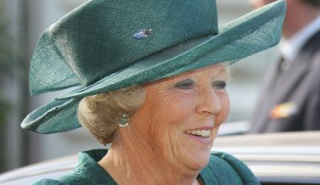
 Copyright: Kongehuset.no
Copyright: Kongehuset.no

 Copyright: Kongehuset.no
Copyright: Kongehuset.no


 The full gallery can be seen at Kongehuset.dk, or at PPE (with watermarks)
The full gallery can be seen at Kongehuset.dk, or at PPE (with watermarks)Copyright: Kongehuset.dk
 Born on August 28th, 1999, at the Rigshospitalet in Copenhagen, Nikolai was third in line for the Danish throne at the time of his birth - but has now dropped down to fifth in line after the birth of his cousins Christian and Isabella. The above picture was taken last year.
Born on August 28th, 1999, at the Rigshospitalet in Copenhagen, Nikolai was third in line for the Danish throne at the time of his birth - but has now dropped down to fifth in line after the birth of his cousins Christian and Isabella. The above picture was taken last year. Nikolai was christened on November 6th at the Fredensborg Palace Church. His godparents were Crown Prince Frederik, the Earl of Wessex, Peter Steentrup, Nicola Baird and Camilla Flint.
Nikolai was christened on November 6th at the Fredensborg Palace Church. His godparents were Crown Prince Frederik, the Earl of Wessex, Peter Steentrup, Nicola Baird and Camilla Flint. Photo Gallery from PPE
Photo Gallery from PPECopyright: PPE

 Copyright: Chris Gorzeman/RVD
Copyright: Chris Gorzeman/RVD


 Copyright: Scanpix/Kongehuset.no, Rex Features, Gamma Press
Copyright: Scanpix/Kongehuset.no, Rex Features, Gamma Press

 Copyright: ANP
Copyright: ANP

 Copyright: Se og Hør
Copyright: Se og Hør

 Copyright: ANP
Copyright: ANP



 Article from HELLO! Magazine - "Princess Mary of Denmark not too grand to empty the bins"
Article from HELLO! Magazine - "Princess Mary of Denmark not too grand to empty the bins" Article from Aftenposten - "Princess' pupils start school"
Article from Aftenposten - "Princess' pupils start school" Picture Gallery from PPE
Picture Gallery from PPE Willem-Alexander's speech:
Willem-Alexander's speech:
 Copyright: Dagbladet
Copyright: Dagbladet
 Copyright: Polfoto
Copyright: Polfoto

 Photo Gallery from WireImages
Photo Gallery from WireImages

 Full gallery from Red Barnet
Full gallery from Red BarnetCopyright: Red Barnet
 The pair were asked about their son, Prince Joachim's, relationship with the French-born Marie Cavallier, and while the Queen declined to comment on the rumors of an impending engagement, she did reveal that she had met with Marie and that she was pleased for her son.
The pair were asked about their son, Prince Joachim's, relationship with the French-born Marie Cavallier, and while the Queen declined to comment on the rumors of an impending engagement, she did reveal that she had met with Marie and that she was pleased for her son.
